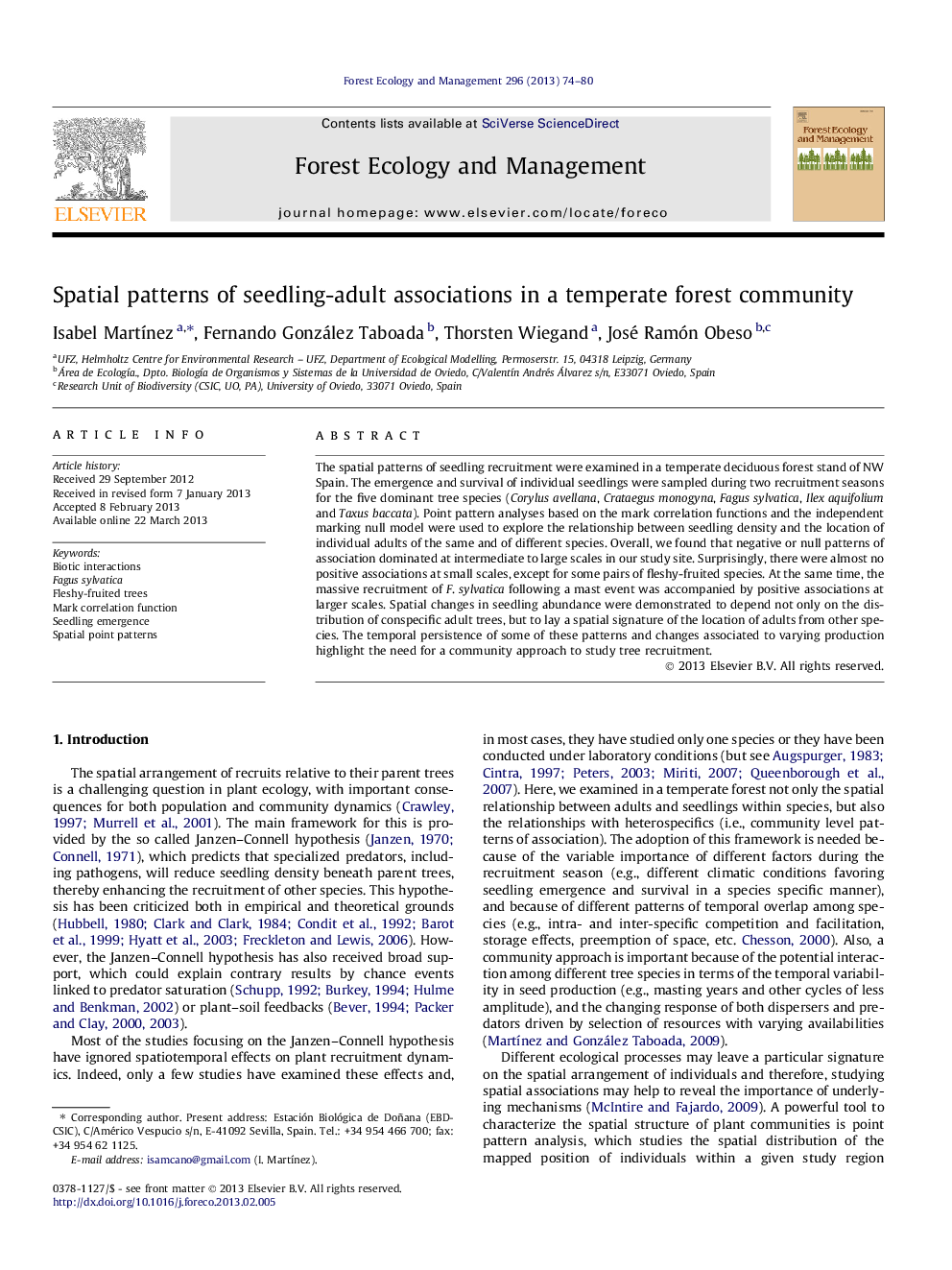| Article ID | Journal | Published Year | Pages | File Type |
|---|---|---|---|---|
| 87147 | Forest Ecology and Management | 2013 | 7 Pages |
The spatial patterns of seedling recruitment were examined in a temperate deciduous forest stand of NW Spain. The emergence and survival of individual seedlings were sampled during two recruitment seasons for the five dominant tree species (Corylus avellana, Crataegus monogyna, Fagus sylvatica, Ilex aquifolium and Taxus baccata). Point pattern analyses based on the mark correlation functions and the independent marking null model were used to explore the relationship between seedling density and the location of individual adults of the same and of different species. Overall, we found that negative or null patterns of association dominated at intermediate to large scales in our study site. Surprisingly, there were almost no positive associations at small scales, except for some pairs of fleshy-fruited species. At the same time, the massive recruitment of F. sylvatica following a mast event was accompanied by positive associations at larger scales. Spatial changes in seedling abundance were demonstrated to depend not only on the distribution of conspecific adult trees, but to lay a spatial signature of the location of adults from other species. The temporal persistence of some of these patterns and changes associated to varying production highlight the need for a community approach to study tree recruitment.
► Seedling recruitment was studied for the dominant tree species in a temperate forest. ► Recruitment varied between seasons, especially due to a masting of the beech. ► Point pattern analyses revealed complex associations between seedlings and adults. ► Associations varied in time and depending on the species pairs considered. ► Our results highlight the need for a community approach to study tree recruitment.
